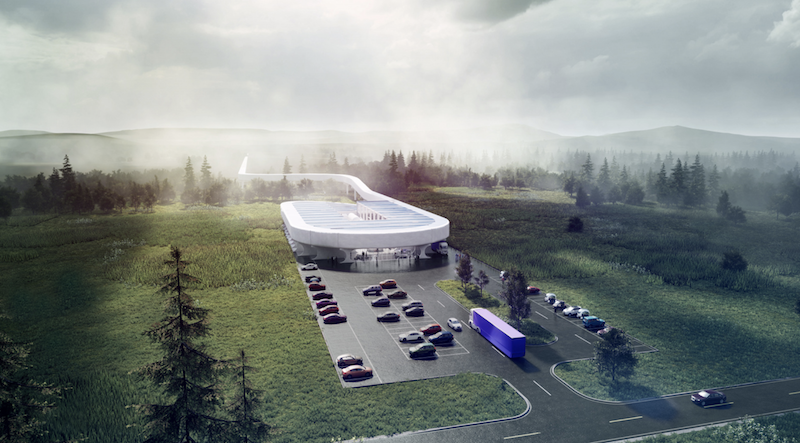BIG is designing the Hyperloop Certification Center (HCC) on an 800-acre site in West Virginia. The HCC is the next milestone to demonstrate the operation of the Hyperloop system as a commercial product. The project attempts to turn infrastructure into architecture by fundamentally tying the architecture of the HCC to the physical infrastructure of the transportation system.
The 800-acre HCC site will include a welcome center, a six-mile certification track, a pod final assembly facility, a product development test center, and a training center for operations, safety, and maintenance. In order to create a physical interface, the elevated vacuum tube wraps around itself and descends as a gentle ramp, ending in an airlock that allows for safe entry and exit for pods.
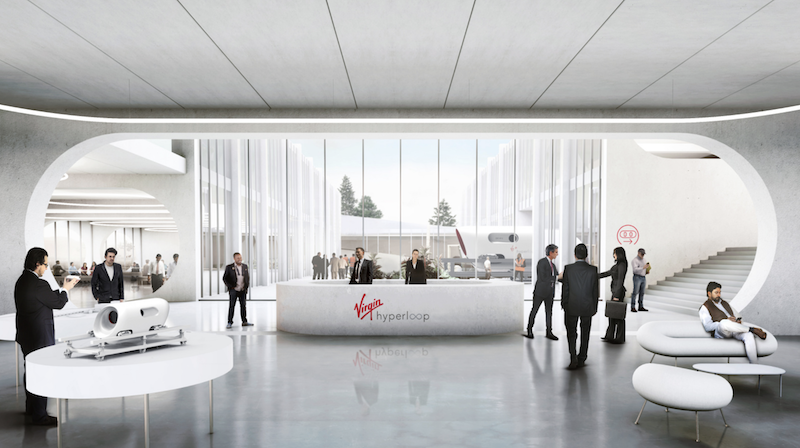
The main structural system for the building is shared with the vacuum tube. For greater lateral stability, the corners have been reinforced with a radius on top and bottom and frames with pill-shaped cutouts.
The pill-shaped loop of the tube forms the exterior facade of the facility and the support structure gets extended towards the interior as a sequence of concrete frames with filleted corners for lateral support. Roof, floors, and glass facades are infilled between the frames and form a simple warehouse-like structure that organizes the program as a continuous loop around a central courtyard.
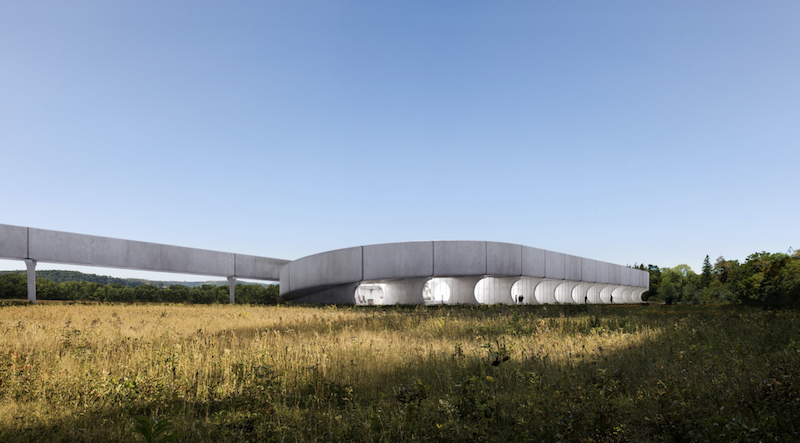
The outdoor courtyard can be used for assembly and testing of pod components, large gatherings, and as a social space for the staff. It also provides visual connections between the different departments and references the courtyard of Virgin Hyperloop’s LA campus.
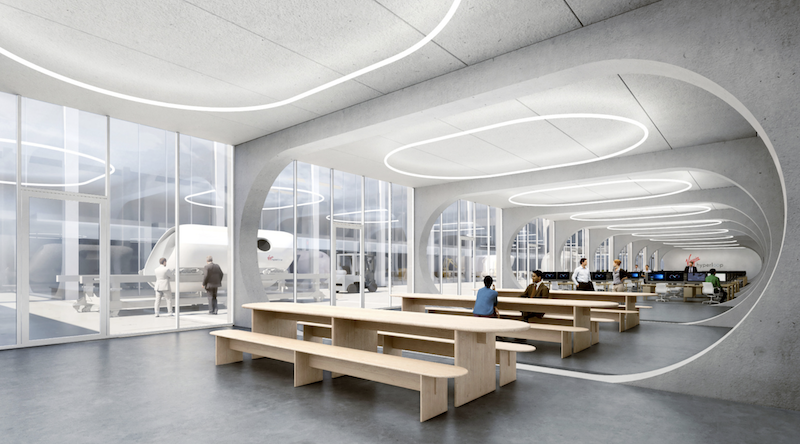
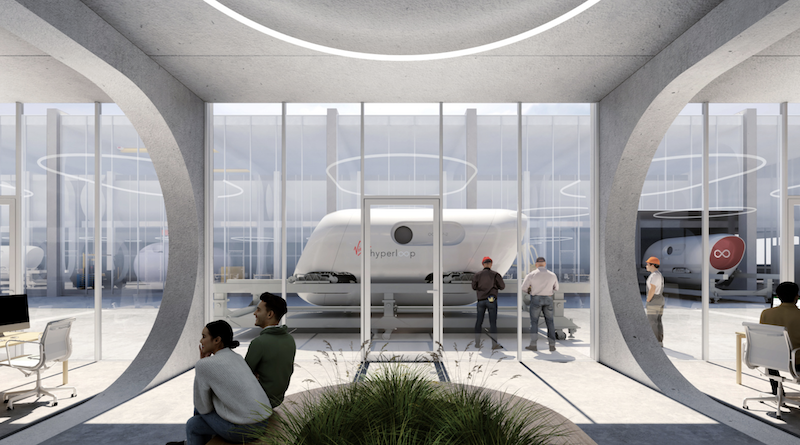
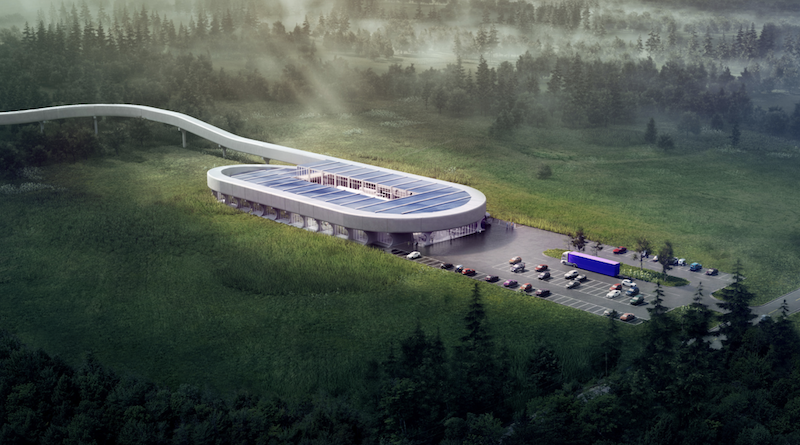
Related Stories
| Aug 11, 2010
GSA celebrates 60th anniversary
The U.S. General Services Administration today is commemorating its 60th anniversary as it engages in one of its its most challenging assignments ever—helping to achieve the goals of the American Recovery and Reinvestment Act.
| Aug 11, 2010
Earthquake engineering keeps airport grounded
Istanbul, Turkey's new 2.15 million-sf Sabiha Gökçen International Airport opened on October 31, 2009, becoming the world's largest seismically isolated building. Arup's global airport planning and engineering team, in collaboration with architects Dogan Tekeli Sami Sisa Mimarlik Ofisi and contractor LIMAK-GMR JV, working within an 18-month timeline, designed and built the facility wi...
| Aug 11, 2010
Manhattan's Pier 57 to be transformed into $210 million cultural center
LOT-EK, Beyer Blinder Belle, and West 8 have been selected as the design team for Hudson River Park's $210 million Pier 57 redevelopment, headed by local developer Young Woo & Associates. The 375,000-sf vacant passenger ship terminal will be transformed into a cultural center, small business incubator, and public park, including a rooftop venue for the Tribeca Film Festival.
| Aug 11, 2010
Special Recognition: Triple Bridge Gateway, Port Authority Bus Terminal New York, N.Y.
Judges saw the Triple Bridge Gateway in Midtown Manhattan as more art installation than building project, but they were impressed at how the illuminated ramps and bridges—14 years in the making—turned an ugly intersection into something beautiful. The three bridges span 9th Avenue at the juncture where vehicles emerge from the Lincoln Tunnel heading to the Port Authority of New Yor...
| Aug 11, 2010
29 Great Solutions
1. Riverwalk Transforms Chicago's Second Waterfront Chicago has long enjoyed a beautiful waterfront along Lake Michigan, but the Windy City's second waterfront along the Chicago River was often ignored and mostly neglected. Thanks to a $22 million rehab by local architect Carol Ross Barney and her associate John Fried, a 1.


